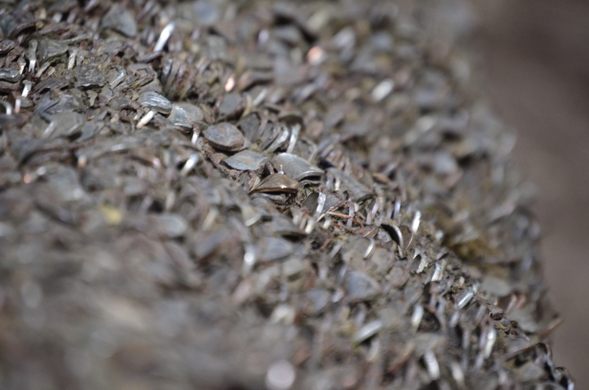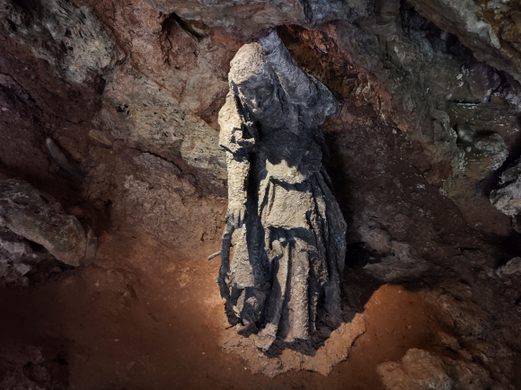Mother Shipton's Cave and the Petrifying Well
Once thought to be the mysterious work of a witchy prophetess, a well with unusual properties turns objects into "stone".
Mother Shipton was said to be a witch and an oracle, predicting doomsday horrors and disasters that were to befall the Tudor reign, with each morbid forecast recited in prose.
Allegedly born as Ursula Southhell in a cave in the forests of Knaresborough, she was associated with all kinds of tragic events and dark doings in the area, including the bewitchment of a nearby well that turned objects into stone.
“The world to an end shall come In eighteen hundred and eighty one.”
-Mother Shipton
Taking the post-humous credit and blame for many strange happenings throughout the UK, Australia and the U.S. throughout the 17th, 18th, and even the 19th centuries, Mother Shipton left quite a legacy. Besides several published editions of her prophecies, her name graces pubs, and her effigy and statues are used by fortune tellers. A moth whose wings appear to bear the image of a hag’s face was named after her, and a caricature of her is believed to be one of the first adaptations of the British Pantomime dame (a type of British drag act).
One of the mystical secrets of Mother Shipton has been solved by modern science. The well nearby her dwelling that petrified objects left in its waters has been something of a visitor’s attraction since 1630, making it one of the oldest tourist spots in England. Once thought to be the work of witchcraft, it is now known that the water that can turn thing like teddy bears, hats and other random items into “stone” within 3 to 5 months is due to the natural process of evaporation and an unusually high mineral content.
The park containing Mother Shipton’s Cave and Petrifying Well now has a gift shop, a picnic area, a wishing well, and of course a walk along the river to see the items, consisting mostly of children’s toys, hung beneath the soothsayer’s petrifying waters at the well.
Know Before You Go
The park is located on the west side of the River Nidd, which is on the opposite side of the river from the centre of Knaresborough and from the train station, and the park can be accessed from near Knaresborough High Bridge (to the north of the rail viaduct). The entrance has parking available, although that parking is only for the attraction and not for people who want to visit the city afterwards. Both the train station and several bus stops are located within a short distance of the entrance.
The path running the length of the park is only one mile long and should be easy for most people to walk. However, the paths to the attractions have stairs, and while the stairs contain twenty-five steps or fewer, the locations may still be inaccessible to wheelchair users or other people with mobility impairments. Visitors with pushchairs or prams will need to leave those things at the bottom of the steps.
Dogs are welcome in the park except in the playground. However, dogs need to be kept on a lead at all times.
Community Contributors
Added by
Edited by
Plan Your Trip
The Atlas Obscura Podcast is Back!







































Follow us on Twitter to get the latest on the world's hidden wonders.
Like us on Facebook to get the latest on the world's hidden wonders.
Follow us on Twitter Like us on Facebook